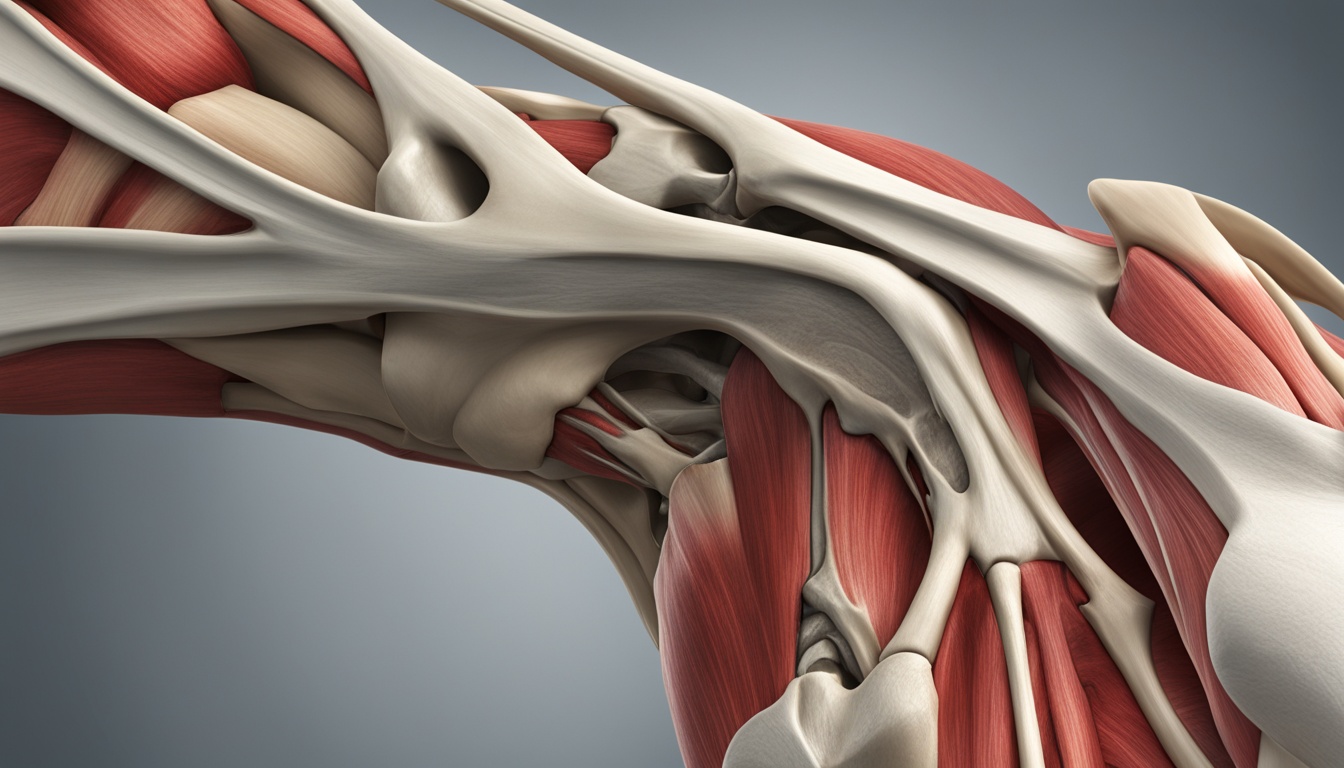The shoulder carries out many roles due to its unique structure. It has several joints, muscles, and tendons. The rotator cuff, which is made up of four muscles, is especially important for moving the shoulder.
Issues like chronic instability can come from accidents, overuse, or having loose shoulders. This might lead to pain, weakness, and sometimes harm to nerves. When the shoulder pops out of its socket, which mainly happens forward, it’s called an anterior dislocation. This often occurs from falling or getting hit. In the past, putting the shoulder in a cast was the go-to fix. But new findings suggest this might not be the best approach, as it could make the ligaments weaker.
Now, stem cell therapy is offering hope by helping the shoulder tighten back up. It’s showing results even after surgeries didn’t work out. Regenerative medicine, like injections, can make the shoulder muscles and ligaments stronger. This might avoid the need for an operation.
Key Takeaways:
- Shoulder dislocation disease can result from trauma, repetitive strain, or loose shoulder joints.
- Chronic shoulder instability syndrome can lead to pain, weakness, and nerve damage.
- Anterior dislocation is the most common type of shoulder dislocation.
- Immobilization can weaken the ligaments, making alternative treatments necessary.
- Stem cell therapy has shown promise in tightening the shoulder and promoting healing.
Common Shoulder Injuries and Stem Cell Therapy Treatment
Shoulder injuries are common because the shoulder joint moves a lot and is easy to hurt. The shoulder can be affected by many conditions, causing pain and limiting how you move. Some frequent injuries are shoulder dislocation, tendon inflammation, and rotator cuff tears.
Treatments for shoulder injuries start with rest and medicine. Physical therapy also helps to ease pain and make your shoulder move better. These steps are tried first. But, if they don’t work, surgery might be needed.
Stem cell therapy is a new, non-surgical option that’s been effective for many with shoulder problems. It uses the body’s own regenerative power to heal itself. This method can help with conditions like rotator cuff tears and shoulder arthritis, easing pain and making the shoulder work better.
This cutting-edge method uses stem cells taken from your body. These cells are then placed in the injured area to help it heal. Stem cell therapy is a good choice for those who want to avoid surgery, especially active people who don’t want a long recovery.
Advantages of Stem Cell Therapy for Shoulder Pain
Stem cell therapy is great for shoulder pain and injuries. It’s less risky than surgery and uses the patient’s own stem cells. This lowers the chances of the body rejecting the treatment.
It works well for bad shoulder problems. It can make the pain go away fast. And it helps the shoulder work better. All with little or no downtime needed after treatment.
The recovery time is much faster than surgery. The process includes checking the patient well, finding and preparing the right cells, and then giving them back to the patient. Doctors also keep a close eye on how the patient is doing after.
Stem cell therapy has a bright future for shoulder issues. It doesn’t need big cuts and offers a quicker recovery. This therapy taps into the body’s own healing power, making it a good choice for shoulder healing.

